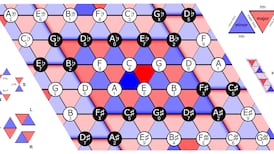Maynooth researchers are studying the genes of bacteria to discover the nature of the earliest primitive life forms, writes Dick Ahlstrom
Scientists in Maynooth are using powerful computers to look back to the very origins of life. Their computer programme uses the genetic code of modern microbes to trace bacterial lineages towards the beginnings of life on planet Earth.
The work also suggests that attempting to devise a microbe family tree may be the wrong approach given the fact that single celled organisms are more than happy to share genes. The interconnected lineages caused by gene sharing means the family tree should look more like a family network, explains NUI Maynooth's Dr James McInerney.
He and his Department of Biology collaborator Dr Davide Pisani are specialists in "bioinformatics", the study of the genetic blueprint, DNA, using tremendously powerful computers.
Their latest work on the bacterial origins of the "human" side of the family tree, the eukaryotes, was published late last year in the journal, Molecular Biology and Evolution.
Their expertise in the genetic analysis of the earliest single celled organisms also provided them with an invitation to write a commentary in the journal Science on a paper published in November 2007 on the subject.
The commentary focuses on how bacteria inherit their genes. The conventional method is by cell division, but bacteria are just as likely to share genes, swopping them back and forth even between unrelated strains.
The Science report looked at E coli and how readily it could pick up genes from other bacteria. "The barriers are very, very low and almost every single kind of gene can transfer in E coli," he explains. "It not only tolerates it, it is designed for it. We knew the mechanisms, we just didn't know the extent of it happening."
This has huge implications for our understanding of bacterial evolution, Dr McInerney says. We are familiar with plant and animal evolution where genes are inherited from parents and passed on to young. Bacteria, however, can play mix and match, in some cases to spark entirely new lineages.
This is what Drs McInerney and Pisani argued in their own research paper which looked at how the early prokaryote bacteria could have triggered the arrival of the newer eukaryote bacteria that eventually led to the evolution of fungi, plants and animals.
Eukaryotes like us have cells which contain a nucleus that holds the DNA. Prokaryotes are different in they have no nucleus to hold their DNA.
Prokaryotes are represented by most modern bacteria, the eubacteria, and a very ancient bacterial family, the archaea. The archaea only came to prominence in recent years after the continuing discovery of new "extremeophiles", archaebacteria that could live in super-hot deep sea volcanic vents and in chemically harsh environments that would kill off ordinary eubacteria.
McInerney spent years developing a software package that could analyse the DNA from different bacteria and then slot them into a "family network" of bacterial lineages. With Pisani the two began to trawl through the world's growing repository of bacterial genomes including eukaryotes, eubacteria and archaea.
Oddities began to occur including the discovery that half the markers for eukaryote genes were also found in prokaryotes.
They also found three groups of apparently shared genes between them, one a link between cyanobacteria and the cholorplasts found in modern plants, another an early bacteria that integrated into eukaryotes eventually to form mitochondrial DNA and a third a strong link with the archaebacteria.
"These are the three relationships the eukaryotes have with the prokaryotes," Dr McInerney explains. This evidence and the knowledge that bacteria will readily transfer genes led the two to the conclusion that our lineage was formed by the merger of an early prokaryote-type bacteria and an archaebacteria.
"We believe it was a fusion event," Dr McInerney says. The bacterial forms initially may have formed a symbiosis, helping to improve survivability in the Earth's harsh early environment.
Over time the two may have fused to form a single organism with new characteristics, including a nucleus in which to contain DNA and a special energy system in mitochondrial DNA.
Dr McInerney points out the arguments over the origins of the eukaryotes will continue. There are currently 72 separate theories on the issue and theirs links with only two of these.








